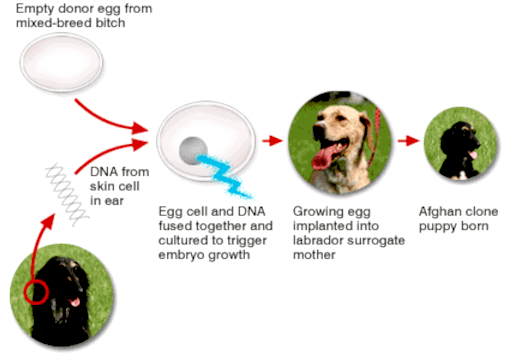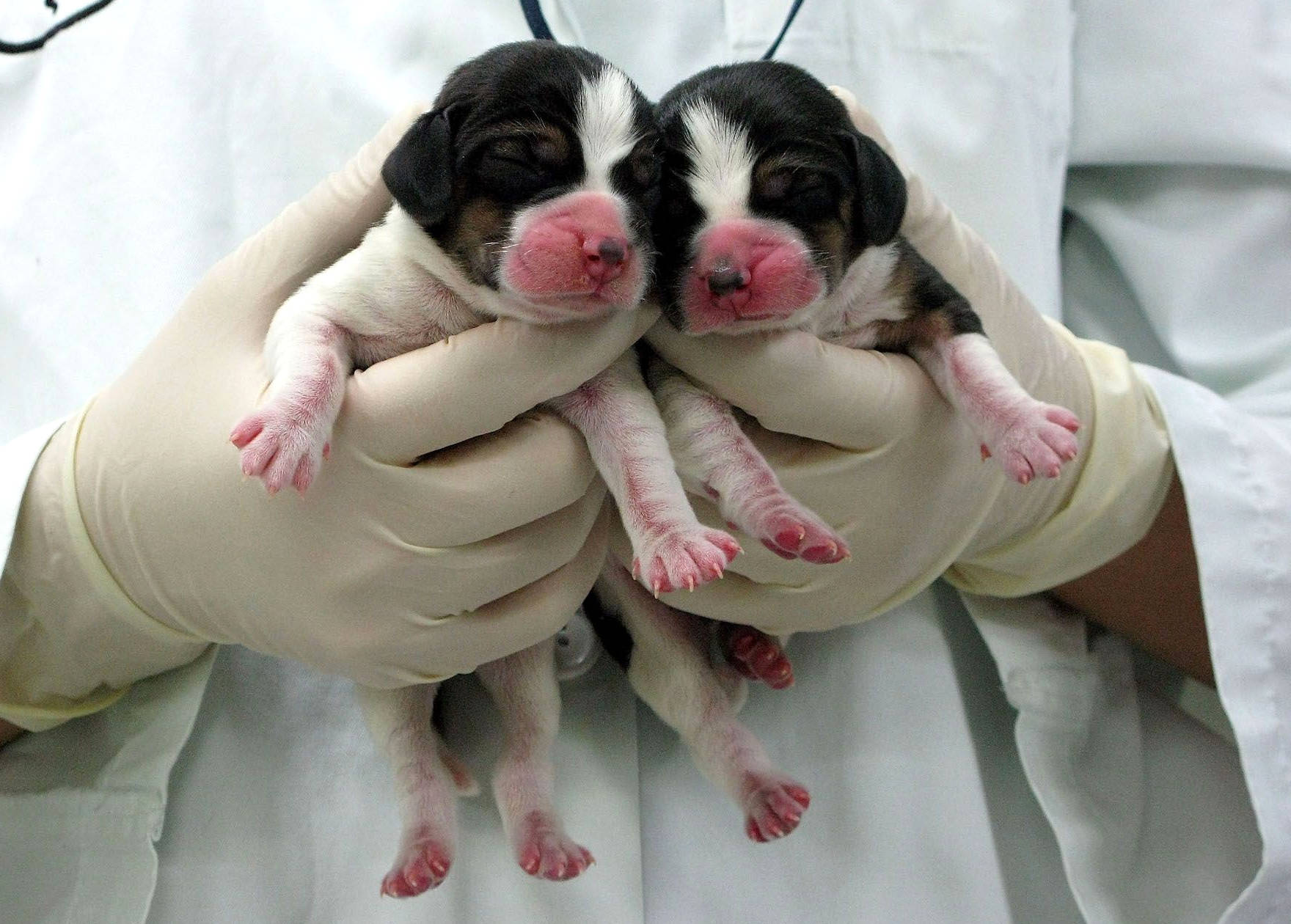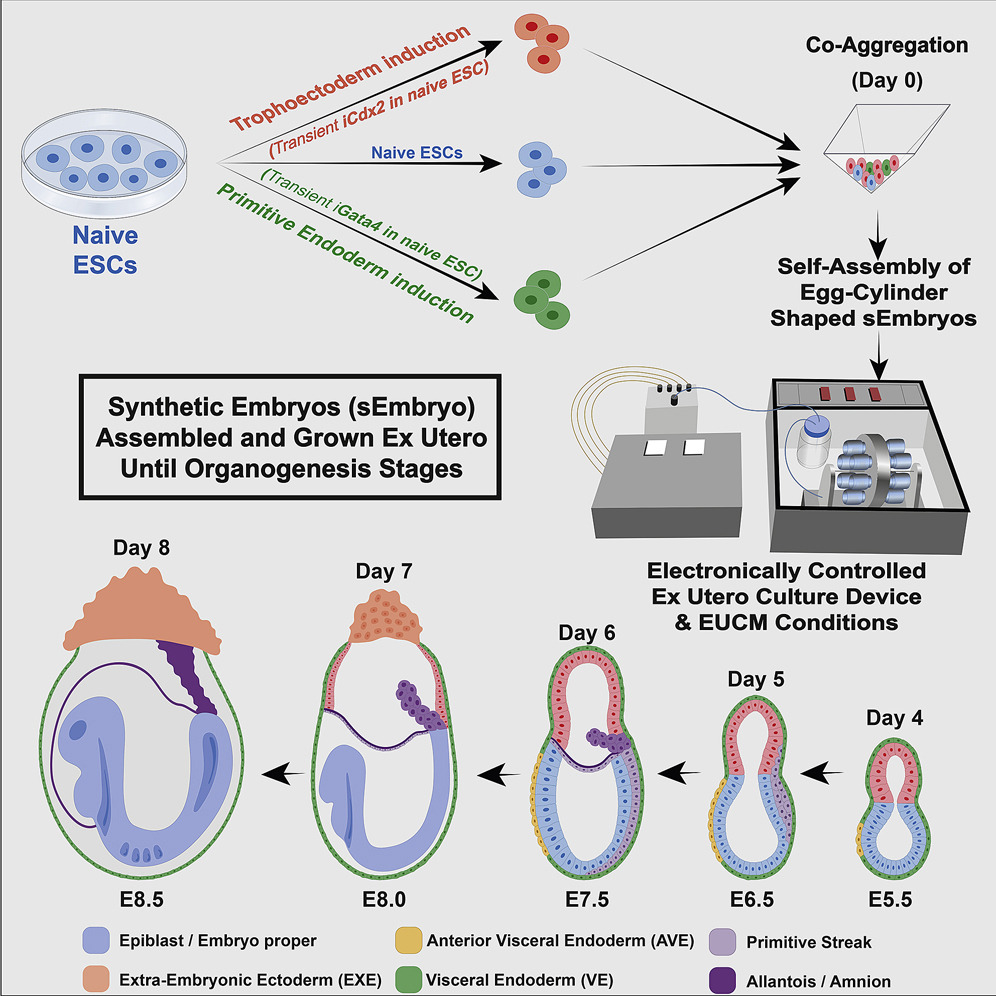|

Almost
any human cell can be used to replicate a person via cloning,
but care should be taken when matching
Ectogenesis (from the Greek ἐκτός, "outside", and genesis) is the growth of an organism in an artificial environment, outside the body in which it would normally be found, such as the growth of an embryo or fetus outside the mother's body, or the growth of bacteria outside the body of a host. The term was coined by British scientist J. B. S. Haldane in 1924.
Complete ectogenesis is when the entire process of conception, embryonic development, and gestation takes place outside the human body; while partial ectogenesis is most often used to describe the transfer of a partially developed fetus from the human womb to an artificial womb to complete gestation.
Current research into partial ectogenesis represents a potentially significant advance in life-saving technologies for extremely premature babies and could have real-world impacts within the next decade.

CURRENT STATE OF TECHNOLOGY
Current scientific research is exploring the potential of partial ectogenesis. The stated aim of this research is to find more effective treatments for extremely premature babies. This research, which explores transferring fetuses from the maternal womb to an artificial womb environment, where they can continue to gestate, involves the use of lamb fetuses or simulation technology and not human fetuses. It should also be differentiated from the use of incubators for premature babies because it focuses on fetuses, rather than neonates, which have different physiological and physical characteristics.
In 2017, a team of scientists from The Children’s Hospital of Philadelphia reported the development of the Biobag, an artificial external gestation environment that closely reproduces the conditions of the womb. The Biobag is a sealable
polyethene bag containing sterile, synthetic amniotic fluid, with catheters delivering nutrients and removing waste products.
In the Philadelphia study, eight extremely premature lamb fetuses were removed from the maternal womb by caesarean section and placed in Biobags. The blood vessels from the lambs’ umbilical cords were connected to a pumpless oxygenator that allowed the fetuses’ heartbeats to control circulation as they would in the womb. The lambs remained in Biobags for four weeks, all survived and showed evidence of being healthy and of having developed when they were delivered from the bags.
Also in 2017, scientists from Australia and
Japan launched a similar device, called the EVE platform. Like the Biobag, the EVE platform is a sealed environment containing synthetic amniotic fluid and with an oxygenator and catheters. This version of the platform sustained lamb fetuses for a week. However, there was a higher instance of morbidity and mortality than in the Biobag study. In 2019, following a redesign of the EVE platform, the same group reported an improved survival rate, with lamb fetuses maintained outside of the maternal womb for five days.
A team of researchers in the Netherlands is also currently working on the development of a perinatal life support (PLS) system, or artificial womb, that will supply the fetus with oxygen and nutrients through the umbilical cord and an artificial placenta. Unlike the two earlier studies, which involved lambs, the PLS project will use breakthrough simulation technology and replicate the birth of an extremely premature infant using a manikin (a human simulation model used in medical research) and advanced computational monitoring and modelling.
In September 2023, the first step toward clinical trials involving human fetuses was taken when US Food and Drug Administration (FDA) advisors met to discuss the ethics of moving research on artificial wombs from animals to humans.
In contrast, complete ectogenesis is mostly discussed speculatively in academic literature, and in fiction, and the possibility of human conception and gestation occurring wholly outside the human body remains a more distant prospect.
It is important to carefully consider the ethical, social, and legal questions raised by possible future advances in ectogenesis-enabling technologies, whether partial or complete, in order to understand the potential benefits they may provide as well as any challenges and risks.

If
you are going to clone a human, you might as well copy
someone exceptional.
HUMAN EMBRYOS & FETUSES
Ectogenesis of human embryos and fetuses would require an artificial uterus. An artificial uterus would have to be supplied with nutrients and oxygen from some source to nurture the fetus, as well as dispose of waste material. There would likely be a need for an interface between such a supplier, filling this function of the placenta. As a replacement organ, an artificial uterus could be used to assist women with damaged, diseased or removed uteri to allow the fetus to be conceived to term. It also has the potential to move the threshold of fetal viability to a much earlier stage of pregnancy. This would have implications for the ongoing controversy regarding human reproductive rights. Ectogenesis could also be a means by which homosexual, impotent, disabled, and single men and women could have genetic offspring without the use of surrogate pregnancy or a sperm donor, and allow women to have children without going through the pregnancy cycle.
SYNTHETIC EMBRYO
In 2022, Jacob Hanna and his team at the Weizmann Institute of Science created early "embryo-like structures'" from mice stem cells. Their research was published by Cell on 1 August 2022. The world's first synthetic embryo does not require sperm, eggs, nor fertilization, and were grown from only embryonic stem cells (ESCs) or also from stem cells other than ESCs. The structure had an intestinal tract, early brain, and a beating heart and a placenta with a yolk sac around the embryo. The researchers said it could lead to better understanding of organ and tissue development, new sources of cells and tissues for human transplantation, although human synthetic embryos are a long ways off.
Also in August 2022, a study described how University of Cambridge, alongside the same Weizmann Institute of Science scientists, created a synthetic embryo with a brain and a beating heart by using stem cells (also some stem cells other than ESCs). No human eggs nor sperm were used. They showed natural-like development and some survived until day 8.5 where early organogenesis, including formation of foundations of a brain, occurs. Scientists hope it can be used to create synthetic human organs for transplantation.
The embryos grew in vitro and subsequently ex utero in an artificial womb published the year before by the Hanna team in Nature, and was used in both studies. Potential applications include "uncovering the role of different genes in birth defects or developmental disorders", gaining "direct insight into the origins of a new life", "understand[ing] why some pregnancies fail", and developing sources "of organs and tissues for people who need them". The term "synthetic embryo" in the title of the second study was later changed to the alternative term "embryo model".
On 6 September 2023, Nature published research that the Weizmann Institute team created the first complete human day 14 post-implantation embryo models, using naïve ES cells expanded in special naive conditions developed by the same team in 2021. It also uses reprogrammed genetically unmodified naïve stem cells to become any type of body tissue. The embryo model (termed and abbreviated as SEM) mimics all the key structures like a "textbook image" of a human day-14 embryo.

BIOETHICAL CONSIDERATIONS
The development of artificial uteri and ectogenesis raises a few bioethical and legal considerations, and also has important implications for reproductive rights and the abortion debate.
Artificial uteri may expand the range of fetal viability, raising questions about the role that fetal viability plays within abortion law. For example, within severance theory, abortion rights only include the right to remove the fetus, and do not always extend to the termination of the fetus. In the abortion debate, the death of the fetus has historically been considered an unavoidable side effect rather than the primary goal of an abortion. If transferring the fetus from a woman's womb to an artificial uterus becomes possible, then the choice to terminate a pregnancy in this way could result in a living child. Thus, the pregnancy could be aborted at any point, which respects the woman's right to bodily autonomy, without impinging on the moral status of the embryo or fetus.
There are theoretical concerns that children who develop in an artificial uterus may lack "some essential bond with their mothers that other children have", a secondary issue to woman's rights over their own body. In the 1970 book The Dialectic of Sex, feminist Shulamith Firestone wrote that differences in biological reproductive roles are a source of gender inequality. Firestone singled out pregnancy and childbirth, making the argument that an artificial womb would free "women from the tyranny of their reproductive biology."

WHAT ARE THE ETHICAL IMPLICATIONS OF ECTOGENESIS
- What legal and regulatory reforms will be needed to accommodate
ectogenesis?
- What will (and what should) be the legal and/or moral status of the entity transferred to the artificial womb environment ? Should this differ from entities of similar gestational age within the woman’s body or neonatal incubators?
- If complete ectogenesis becomes possible, to what extent will changes in modes of reproduction alter prevailing social norms governing personal and sexual relationships?
- To what extent would complete ectogenesis radically disrupt or render obsolete existing concepts and language (ideas such as ‘birth’, pregnancy’, ‘mother’, and ‘child’)?
-
How will linguistic and conceptual change be exploited or resisted in public debates about human reproduction?
- What impact (if any) will ectogenesis have on the ethics and politics of abortion?
IN
FICTION
In
the fictional John
Storm adventure "Cleopatra
Reborn" the Italian scientist and inventor, Franco
Francisco, perfects his Incubus,
an artificial womb that can be used for out of body
reproduction or cloning. He has ethical reservations that
Isis the Egyptian goddess of life helps to steer him
through. After he begins to doubt his own motives.
REFERENCE
https://www.

|




